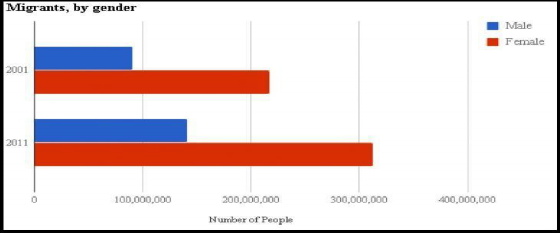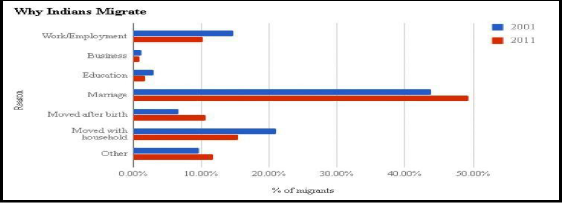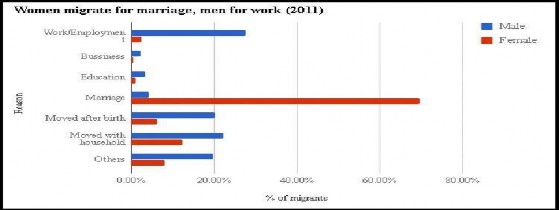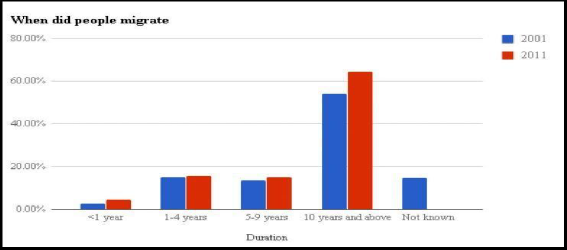6. Comparison of Some Migration Trends Between 2001 and 2011 Census
♤ 45.36 crore people i.e. 37 per cent of the population or every third citizen of India is a migrant —now settled in a place different from their previous residence.
♤ Between 2001 and 2011, the total number of migrants in India rose by 44.35 per cent from
31.45 crore in 2001. During the same period, India’s population grew 17.64 per cent.

♤ Most of the migrants, around 70 per cent, are females.

♤ Most people, 49 per cent, migrate for marriage (While globally, migration is attempt by people to survive and prosper, in India, marriage appears to be the biggest reason why people migrate) Lesser Indians are now relocating for work and employment — 10.2 per cent in 2011, down from 14.4 per cent in 2001.

♤ Between 2001-2011, marriage was the dominant reason for migration among women, as was the case in previous two decades. Around 21.7 crore of the 31.2 crore female migrants
— 69.7 per cent —cited this reason. 65.9 per cent women in 1981-1991 and 64.9 per cent in 1991-2001 migrated due to the same reason. For men, 'work and employment' was the top reason, mentioned by three crore of the 14 crore male migrants.
♤ Further, data show that bulk of the migrants (64 per cent) moved more than 10 years ago, up from 54 per cent in 2001.

Spatial Variation in Migration: Some states like Maharashtra, Delhi, Gujarat and Haryana attract migrants from other states such as Uttar Pradesh, Bihar, etc. As per census 2001, Maharashtra occupied first place in the list with 2.3 million net in-migrants, followed by Delhi, Gujarat and Haryana. On the other hand, Uttar Pradesh (-2.6 million) and Bihar (-1.7 million) were the states, which had the largest number of net out-migrants from the state. Among the urban agglomeration (UA), Greater Mumbai received the higher number of in migrants. Intra- states migration constituted the largest share in it. These differences are largely due to the size of the state in which these Urban Agglomeration are located.
